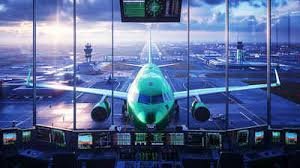Airports Under Siege: Why Cyberattacks on Aviation Are Disturbing and Dangerous in 2025
“Airports are no longer just gateways to travel—they’re digital battlegrounds. The recent wave of cyberattacks on major European airports in 2025 shows how a single breach can ground flights, cost millions, and shake passenger confidence. What seems like a delay at the terminal is, in reality, a disturbing glimpse into aviation’s growing cyber vulnerabilities.”
In an increasingly connected world, airports are no longer just physical hubs of travel—they are highly digitised ecosystems. From ticketing and check-in systems to baggage handling, flight schedules, and air traffic management, nearly every aspect of aviation today runs on sophisticated digital infrastructure. This heavy reliance on technology, however, also makes airports a prime target for cybercriminals.
Just this year, several cyberattacks have disrupted major airports worldwide, including recent incidents across Europe, where check-in and boarding systems at major hubs like Brussels, Heathrow, and Berlin’s Brandenburg Airport were paralysed. Passengers faced long queues, flight delays, and cancellations as airports reverted to manual processes. While these attacks may appear as mere inconveniences for travellers, the reality is far more concerning.
Why Cyberattacks on Airports Are Alarming

1. Disruption of Global Travel
Airports form the backbone of international connectivity. A cyberattack that disables check-in systems, baggage handling, or boarding procedures can lead to massive flight delays, cascading cancellations, and logistical nightmares across multiple countries. This not only affects passengers but also supply chains, global trade, and critical goods movement.
2. Economic Impact
Every hour of airport downtime results in millions of dollars in losses. Airlines bear the brunt of refund costs, rescheduling expenses, and compensation to passengers. Airports themselves face reputational damage, while tourism, business travel, and global commerce suffer ripple effects.
3. Passenger Safety Concerns
While most cyberattacks target systems like check-in and boarding, the threat to air traffic control or navigation systems cannot be ignored. A breach in these areas could jeopardize passenger safety on a catastrophic scale. Even when attacks don’t reach safety-critical systems, the psychological effect on passengers is significant—trust in aviation security is shaken.
4. Exploitation of Personal Data
Airports process millions of passengers daily, collecting sensitive information like passport details, biometric data, payment records, and travel histories. A successful cyberattack may expose this data to identity theft, fraud, or even state-sponsored espionage.
5. Geopolitical Dimensions
Cyberattacks on airports are not always about financial gain. In some cases, they can be politically motivated, carried out by state actors or hacktivist groups to disrupt rival nations’ economies and create instability. Airports, being critical infrastructure, are symbolic targets that send powerful messages when compromised.
Not Just Delays – A Matter of National Security
Airports are part of a country’s critical infrastructure, just like power grids, hospitals, and defence systems. Disruptions here do not only inconvenience travellers—they threaten national security and expose vulnerabilities in a nation’s digital resilience.
The 2025 wave of airport cyber incidents has proven that attackers are becoming more sophisticated, leveraging ransomware, supply-chain vulnerabilities, and service-provider breaches. As seen in Europe, a single compromised vendor can bring multiple airports to a standstill.
What Needs to Be Done
- Zero Trust Security Approach – Airports and service providers must adopt strict authentication and monitoring mechanisms to prevent unauthorised access.
- Regular Cyber Drills – Just as airports conduct fire and evacuation drills, cyber incident response drills should become mandatory.
- Investment in Resilient Systems – Critical operations should have fallback mechanisms that ensure minimal disruption if digital systems fail.
- Collaboration and Intelligence Sharing – Cyber threats do not respect borders. International collaboration between governments, airlines, and cybersecurity agencies is crucial.
- Public Awareness – Passengers must also be cautious with phishing emails, fake travel apps, and scams that often emerge in parallel with large-scale cyber incidents.
Cyberattacks on airports are not just a technical glitch—they are a wake-up call for the aviation industry and governments worldwide. In 2025, as we witness increasing incidents, the message is clear: the future of safe, reliable air travel depends as much on cyber resilience as it does on aviation engineering. Protecting airports from digital threats is no longer optional; it is an urgent priority.
What's Your Reaction?
























